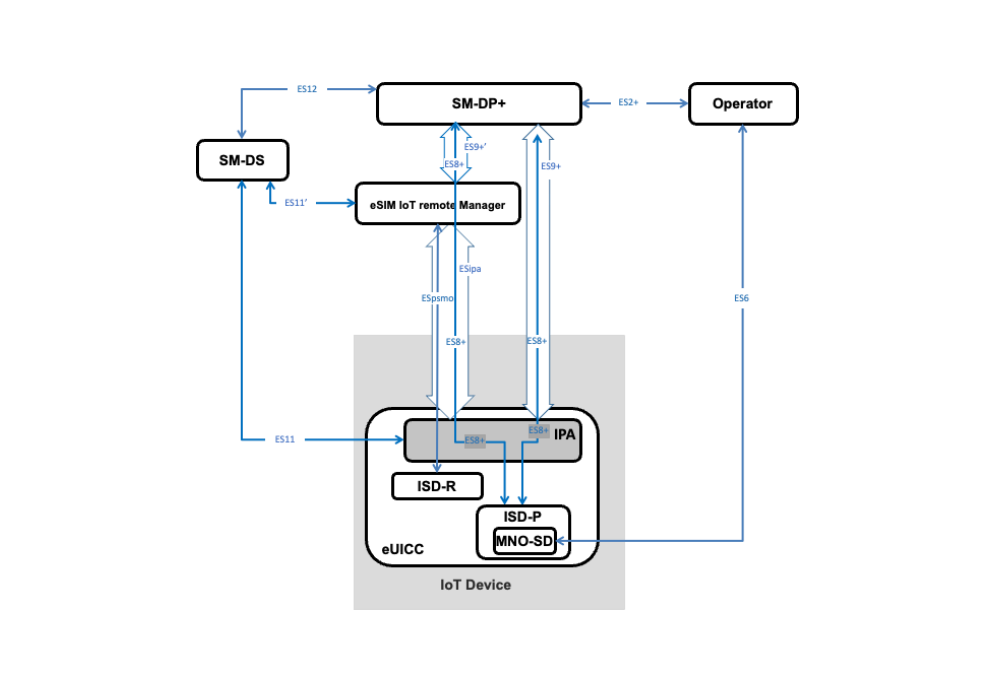
Simplex Wireless can help you save time and money with the “Bring Your Own Operator” (BYOO) feature, but what does it mean?
February 16, 2023
Deploying IoT Connected Fleet Management solutions
March 28, 2023A brief history on eSIM coming to exist.
In order to better understand the new specification, we have put together a short history on eSIM and its creation. If you are interested on the new specification eSIM for Consumer you can jump into the next section of this article.
An Over-The-Air provisionable SIM card or eSIM has been known in the market publicly since AT&T announced their Global SIM card offering in December 2012 with their “Global M2M Broadband Connectivity”. This was a proprietary solution together with the SIM card maker (EUM) G+D also unofficially called eSIM V1. eSIM gained a solid foothold on the automotive industry as it was clear that the cars needed to be connected but a removable SIM card could not withstand the vibrations needs and it needed to be soldered in but then there was the need to switch Mobile Network Operator (MNO) profiles after the fact.
The initial specification was written by group of Tier1 MNOs, Vodafone, Deutsche Telecom and G+D. The same people that wrote the initial SIM specification in 1990’s got together and wrote the first electronic SIM specification. The initial solution was very MNO centric. What made it so was that the switching of the provide from one eSIM to the other was 100% controlled by the MNO and in order to bring in another MNO to the equation a heavy integration between two MNOs was needed including SMS-C integrations. This is the basis of the M2M Specification of eSIM today SGP.02.
From the OEMs (Apple, Samsung) there was a need for the eSIM but with more consumer control without the MNOs having to control the SIM swap and to fill that gap Apple created the Apple eSIM in 2017. This was launched on the Apple iPad with an MNO marketplace where the consumer was able to select the carrier they wanted. The initial carriers were T-Mobile, AT&T and Gigsky.
At that time the Specifications were written by the GSMA and in short order they published the Consumer Specification which goes by the SGP.22. This is what the version of eSIM that has been deployed in many of the phones today including the Apple iPhone 14 eSIM only version in USA. The big advantage of the Consumer eSIM is that it can be downloaded from any GSMA SAS certified SM-DP+ making it very easy to deploy.
The industry loved the easy to deploy aspect of the Consumer eSIM specification with only problem that it cannot be remotely controlled according to the specifications as the Local Profile Assistant (LPA) takes the commands from the consumer.
This is why the new SGP.32 specification has been created. Easy to deploy eSIM ecosystem with the ability to do Remote Control on the device.
Today – IoT eSIM Specification (SGP.32)
If you skipped directly to this chapter without the history, the executive summary is that the IoT eSIM Specification (SGP.32) has been created to have an easy to deploy eSIM ecosystem on the backend with the ability to Remotely Control the eSIM download operation.
The specification SGP.32 has not been released yet but the sentiment in the industry is that it will be released Q2-2023 from there it will take at least 6 months to start seeing commercial deployments in the market. There are pre-standard implementations out there and for example Simplex Wireless has a commercially deployed version of this launched to the market with 100’s of thousands of devices in the field.
The new Consumer eSIM specification will define two major things. The eSIM IoT remote Manager (eIM) is introduced, and the LPA is now called IPA. The IPA will have a version that resides on the device IPA.d and a version that resides on the eUICC IPAe.
The eIM is the service that enables Remote Control of the Consumer eSIM and was the crucial missing component from the Consumer eSIM specification. This will help the market define how the Remote Control of the eSIM is done.
The IPA.d now will have both the LPA functionality of communicating to the eIM about Remote Control issues and to the SM-DP+ to fetch the eSIM Profile and then installing it to the eUICC. The IPA functionality is then extended from the LPA.
The IPA.e has the same functionality but with the benefit that it resides on the eUICC operating system. This means that you could deploy eSIM support on a non eSIM enabled device as the device will not need to have to have any application installed and the only requirement for the device will be the Bearer Independent Protocol (BIP) support on the modem and device level.
If you have kept with us this far on the article it should be clear on why the Consumer eSIM specification is so important for IoT and will result in the “Cambrian Explosion” for eSIM supported IoT devices. We will have a common understanding how this all works, how it will be all interoperable and will allow solution providers mixing and matching different components in the supply chain from different providers.
As always, we at Simplex Wireless are more than happy to chat more about the technology and how we can help your company on this journey of eSIM.
This article was written by Jan Lattunen, CCO, Simplex Wireless.
March, 2023


